When we were in New York, it was not uncommon to find yourself invited into a 200-or-so square foot apartment, books piled under a kitchen sink that had toothbrushes beside it, belying its double-duty. It was always a thrill to see how friends and acquaintances managed to make these tiny spaces into homes.
Our own studio apartment felt grand by comparison, all 55o-square-feet. It’s hard to imagine all three of us fitting now—now that there are four of us and a dog. We seem to accumulate toys the way the latter’s fur can attract foxgloves in an empty field (hardly trying). So I’m always particularly interested and inspired by tiny-home-dwellers who can truly call themselves minimalists.
Shayne’s story goes a (giant) step beyond: She built it!
I asked Shayne Hodgkin if she would be willing to share how she came to build a home atop a 15′ by 8’6” car trailer and thankfully she obliged…
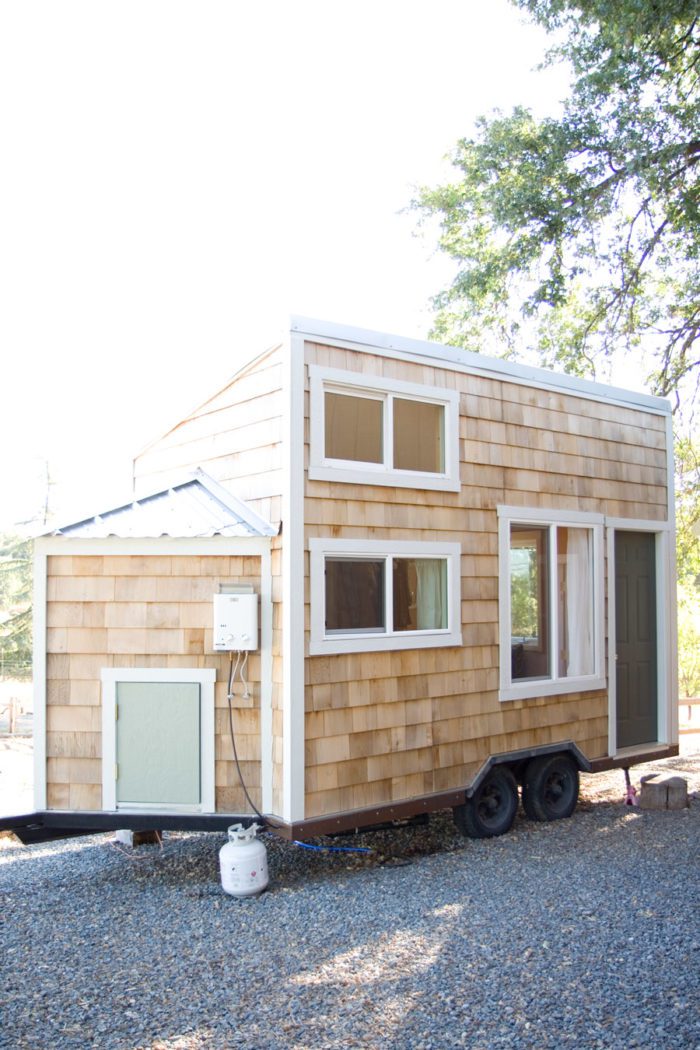
Have you always been interested in small spaces?
When I was eight, I wanted to move out of my parents’ home and into the playhouse my dad built in our backyard. I drew a whole floor plan, including furniture and belongings arranged to fit perfectly. When I pitched the idea to my parents, my dad introduced the concept of “scale” and explained that my bed, in reality, was longer than the length of the play house and would take up most of the space in width. I was disappointed, but perhaps this experience prompted me to start thinking of space efficiency, multi-functionalism, and solutions for tiny living.
Other influential experiences include growing up with a talented father who built houses—including my childhood home—for a living. I admired the way he could solve problems through spatial thinking and understanding natural laws and the properties of materials. And I held closely the idea that one day I would also build a home of my own.
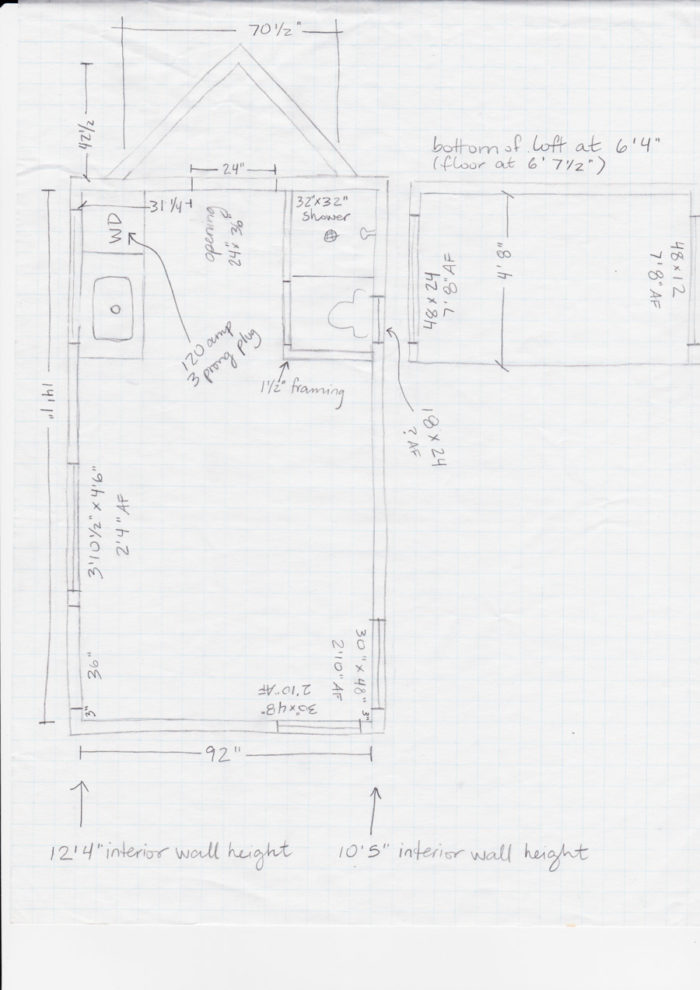

And you did! How did you start the process?
I have a Bachelor’s degree in Interior Architecture with an emphasis in Furniture Design from UC Davis. After graduation, I worked in the design field for two years and then—after exploring Anthroposophy, Rudolf Steiner’s encompassing body of work including Biodynamics and Waldorf Education—went to intern at the Occidental Arts and Ecology Center, building and improving the non-profit and intentional community’s infrastructure. I learned from experienced woodworkers and builders through a wide spectrum of projects—from building decks, renovating a barn, and constructing outdoor coffee tables, to various maintenance tasks. Afterward, I enrolled in the Early Childhood Teacher Training; I completed the certification last summer.
But while I love my primary career teaching Waldorf kindergarten, I wanted to keep my passion for woodworking and building alive. My parents offered to let me build a home on their land. I would teach in the mornings (as a part-time assistant teacher at Cedar Springs Waldorf School) and build in the afternoons and on weekends.
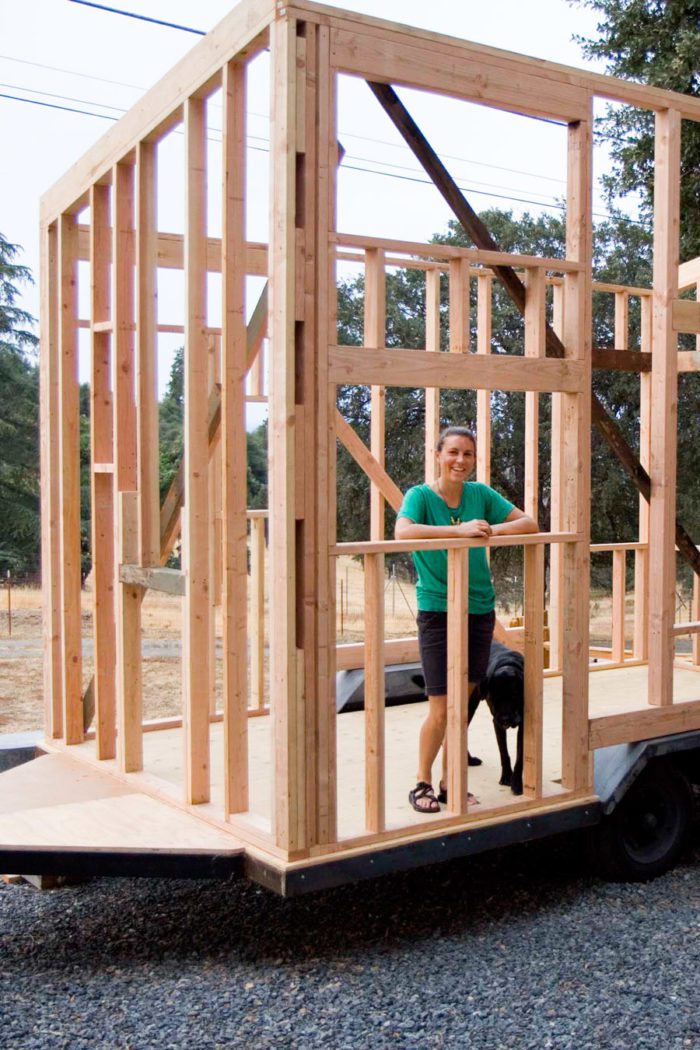
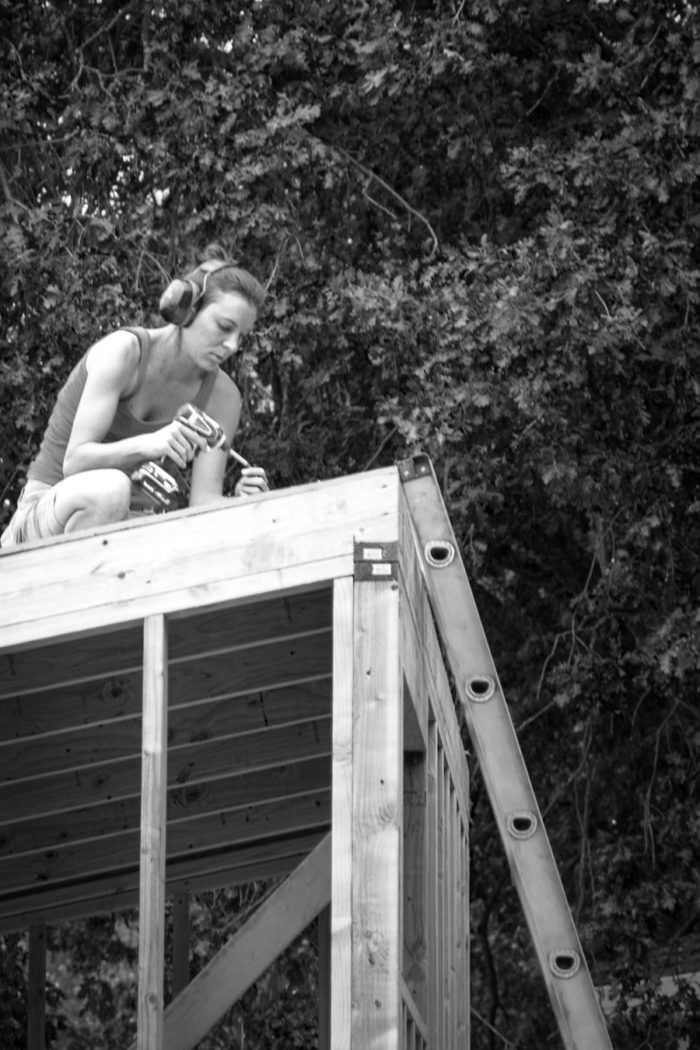
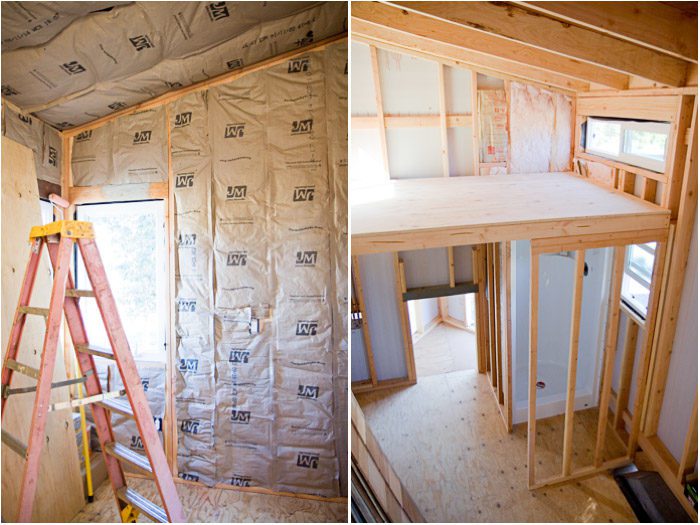
Take us through the process of building the house. What was the most rewarding part?
Although I’ve done carpentry in the past, I had never built a home start to finish. When I decided to build the tiny house, I started drawing floor plans and researching what other builders had done, and I found I needed to purchase a trailer. I looked at trailers specifically manufactured for tiny house foundations, but ended up finding a 15’ car hauler through my local Craigslist. My friend helped me modify it, welding on three additional beams that became the floor joists, and adding one foot to either side of the trailer to widen it. The dimensions—excluding the tongue with the storage room—are 15’ x 8’6”. When the trailer came home, the building began. I purchased materials as needed and learned something new everyday about building a home.
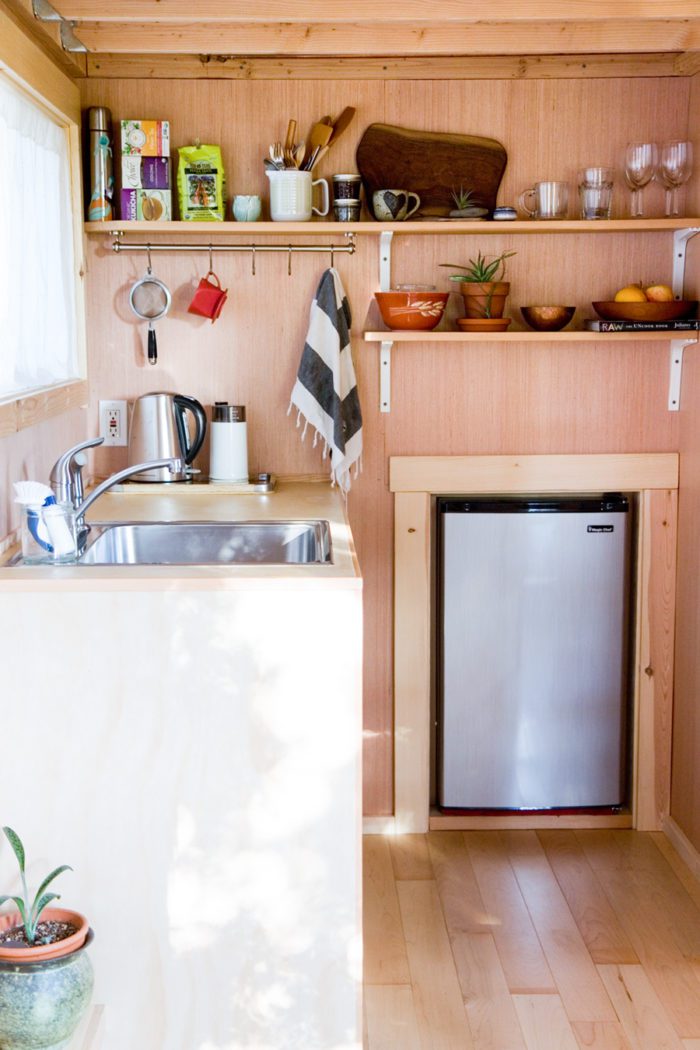
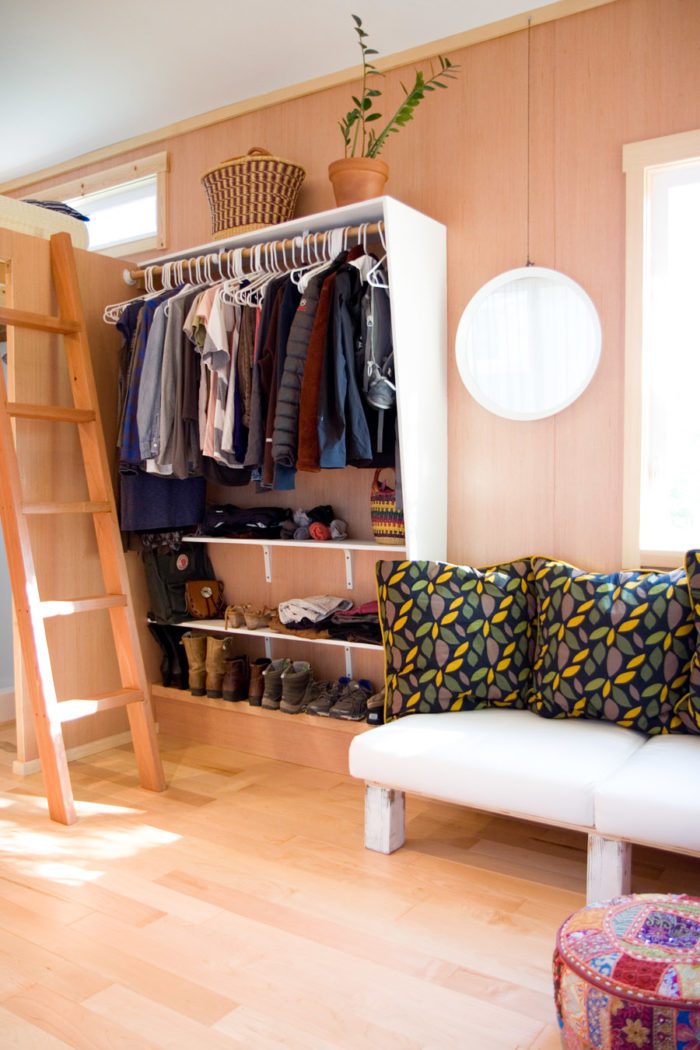
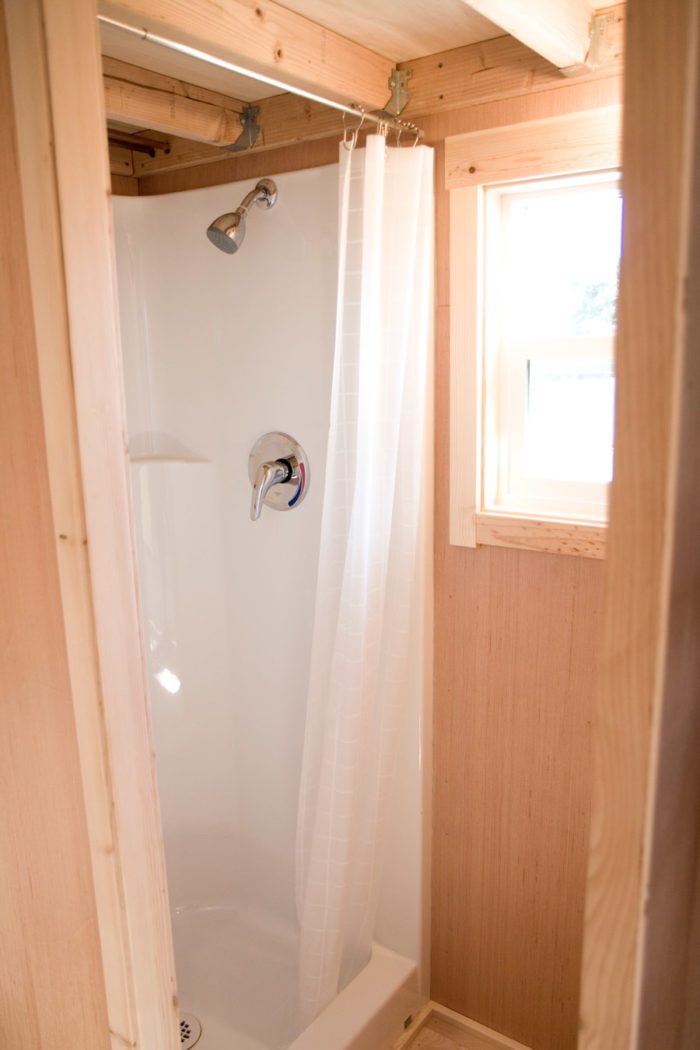
What are a few of the notable pros and cons of living in such a tiny space?
I’m a minimalist who feels best when my impact on the environment is light. I redesigned the floor plan to accommodate salvaged windows purchased from the Habitat for Humanity ReStore. I found the maple flooring at the ReStore, as well, leftover from a larger project—the waste from big jobs, it turns out, can be enough for a whole tiny house. The cedar shake siding was salvaged and what I thought would only be enough for an accent, turned out to cover two sides. In many cases, the salvaged materials that I could find ultimately influenced the design, and I like how it turned out better than what I had envisioned.
One of the cons of living in a small space is that, unless the party can be taken outdoors, gatherings have to be kept to a few people. Typically, I prefer smaller gatherings to larger parties because they facilitate connection, so this wasn’t such an issue for me. The space never felt cramped or restrictive. In fact, people who came to see the house were surprised at how large it seemed. The most common first impression was, “It’s huge!” It amused me every time.
The many windows, high ceilings, natural materials, simple furnishings and minimal clutter create a feeling of spaciousness.

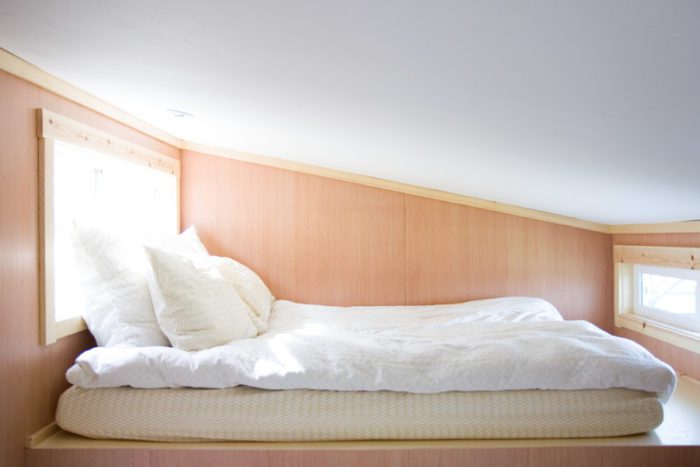
What are some of your favorite details about the finished space?
My favorite details are the corner windows. I love the natural light. The transition from white windows to light wood trim to cherry walls pleases me. I found the cherry paneling when shopping for ceiling material. I intended to paint the walls and ceiling white to create a clean and simple palette, but I ended up deviating from the plan. I love the warmth of wood and included cherry, maple, pine, birch, redwood, and fir—creating a background upon which whomever lives there is able to add his or her own personal style.
Lastly, would you be willing to share a few small-space tips for readers living in their own tiny homes and apartments?
First, allow yourself to detach from things that no longer serve you, either because you don’t use them or don’t love them. In fact, avoid accumulating ‘stuff’ to begin with — do you really need it? Every purchase you make should be something you really like. Take your time shopping for necessities—from dishes to sheets, buy things that really fit your style and that you’ll enjoy using. Think: quality, not quantity. And, of course, enjoy your home!
Shayne accepted a lead teaching position in Brattleboro, Vermont, and hopes to sell her home to someone who enjoys living in the space as much as she has. “It’s bittersweet leaving my hometown and my little home, but I look forward to exploring New England and experiencing four seasons; and I welcome another opportunity to build a home in the future.” If you’re interested in pricing or purchasing, message Shayne on her Facebook page.
Thank you so much, Shayne! And congratulations on your new job!
And thank you to Shoko for her help with this interview.
P.S. Tiny living in Hollywood. Ruthless editing. And how to simplify.


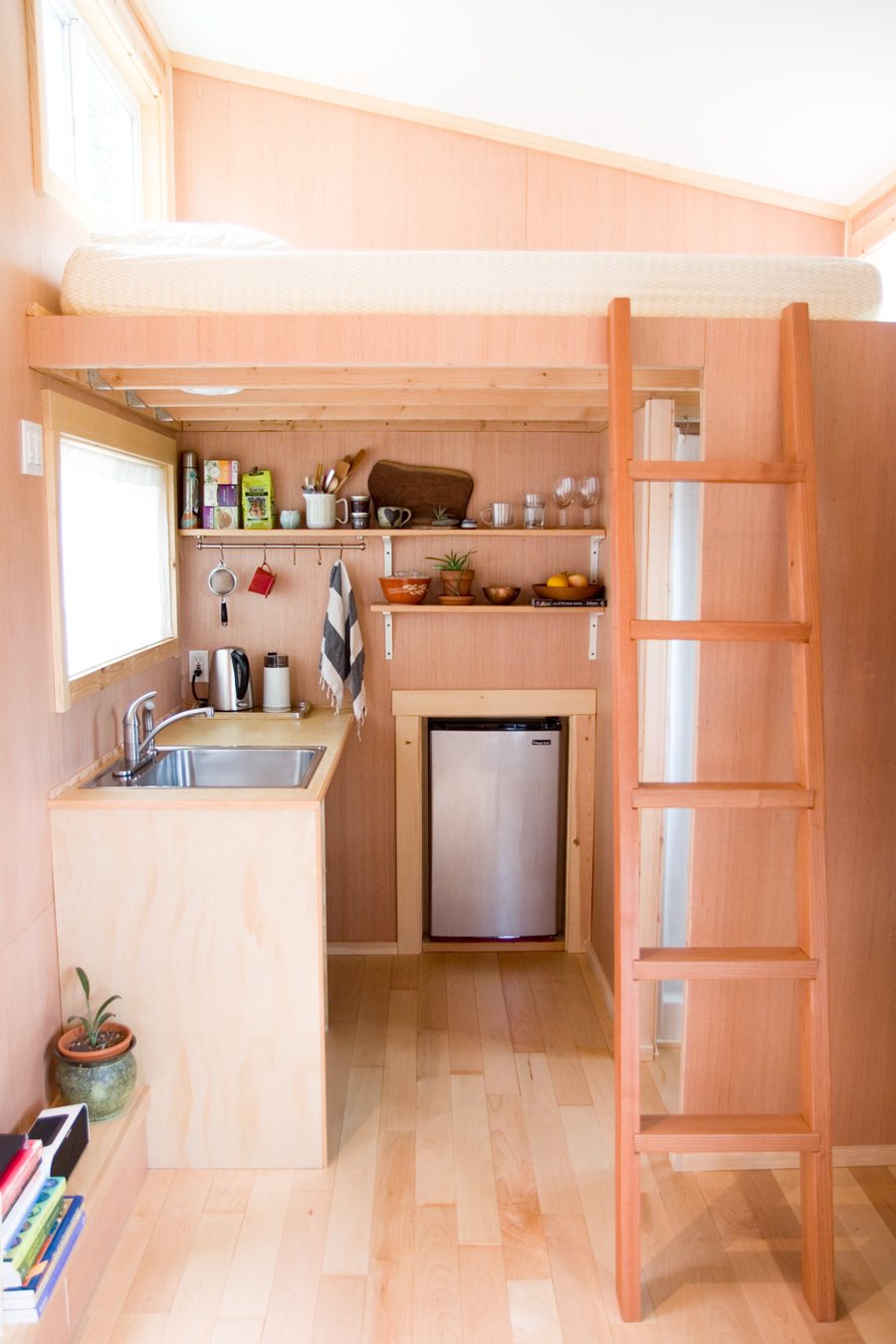
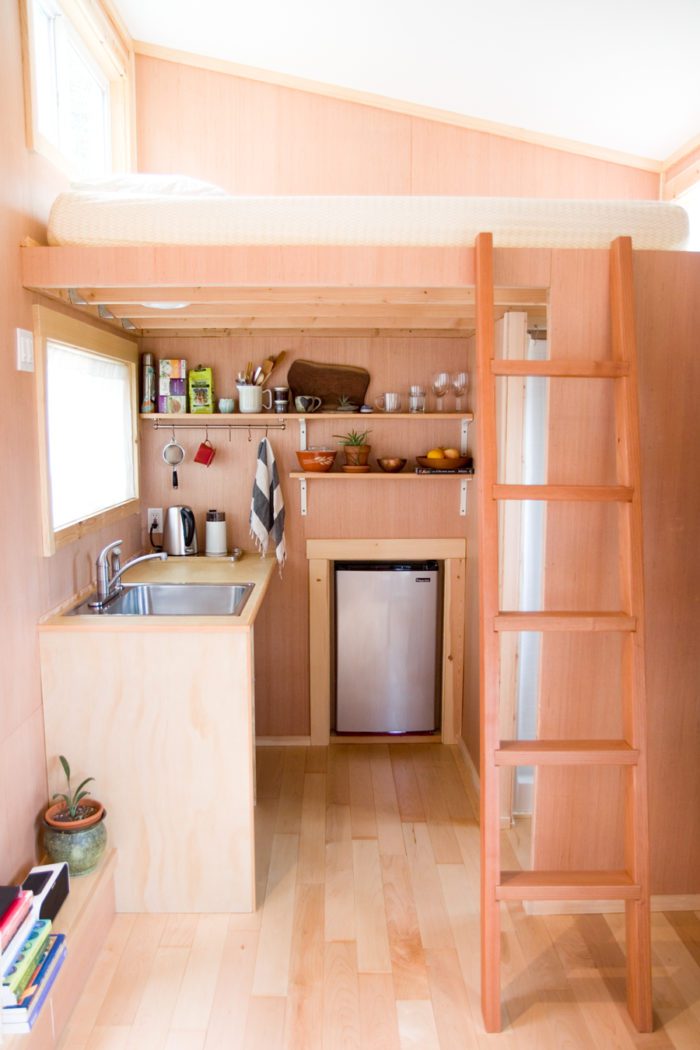
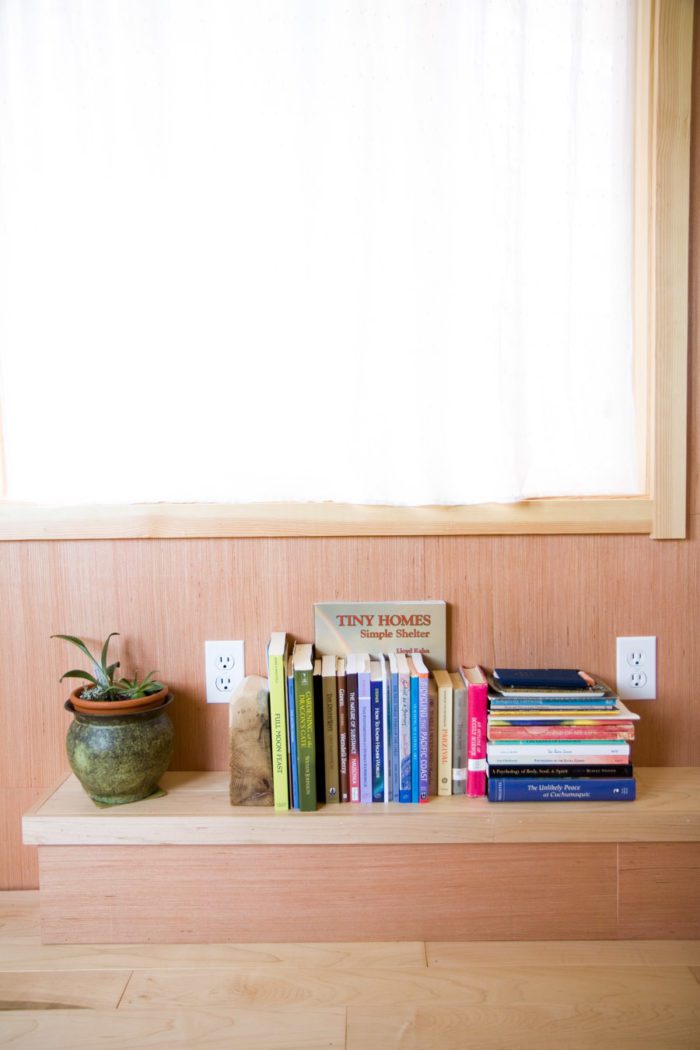


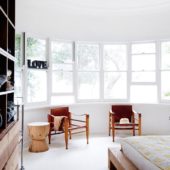
































9 Comments